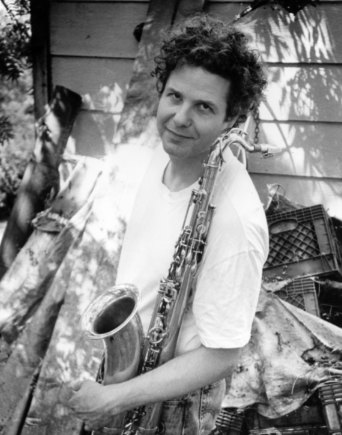"It’s not that you can’t make creative improvisations using rules, but you can certainly do it without them. Miles Davis said that there are no wrong notes, and he was right."
Excerpt from Lenny Pickett's Lesson: Developing a Style of Improvisation
Playing the saxophone is one thing; improvising is another. One is easy to talk about technically, and the other is very difficult to talk about at all. Improvising is not something that readily opens itself up to a technical explanation, because it’s all creativity. How do you describe creativity? You’re in trouble once you broach the subject.
To learn improvisation, begin by transcribing as much music as you possibly can. This will train your ear. It will teach you about a musician’s style and possible approaches; but that alone won’t teach you how to improvise. You should also do a lot of playing in situations that require you to improvise. Those two things, along with being proficient on your instrument by practicing the technical aspects, are the keys to learning how to improvise.
There isn’t a prescription for a successful improvisation. Stylistically, according to the people who practice that art, there may be one for a successful Dixieland improvisation, and another for a successful bebop improvisation—but you do not have to follow what preceded you. Improvisation is something that you create in the moment. It doesn’t have to follow a tradition and it doesn’t have to ignore a tradition. It doesn’t have to be confined by regulations. It can be interesting without following rules or being repetitious. In fact, rules and repetition can be counter-productive to real creativity. It’s not that you can’t make creative improvisations using rules, but you can certainly do it without them. Miles Davis said that there are no wrong notes, and he was right. You can play any note in the chromatic scale against any chord, and make it work. A lot of times it’s the conviction with which you play something, and not the notes you play, that really makes it work. In Miles’s autobiography, he talks about playing the blues in the key of C; you get to the IV chord and find that you’re playing an E natural. To make the major 7th of the IV chord sound like you mean it is quite a challenge. Being able to play with the kind of conviction it takes to make that work is much more interesting than actually having played an E flat or an F. The earliest jazz was based on the melody. You would play the melody and rephrase it, or you would use key elements of the melody and re-interpret them. I think that is a far more interesting method of improvising than running changes.
For Lenny Pickett's complete lesson plus musical examples, including a CD of Lenny playing those examples, plus five more incredible lessons by other great artists, you just gotta pick up Master Lessons For The Creative Musician.
Check out Lenny's Wikipedia Page for more information.

